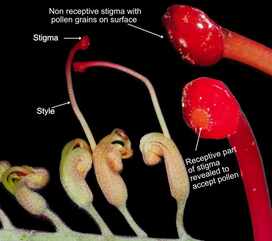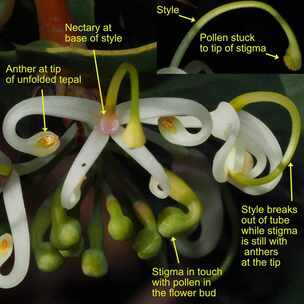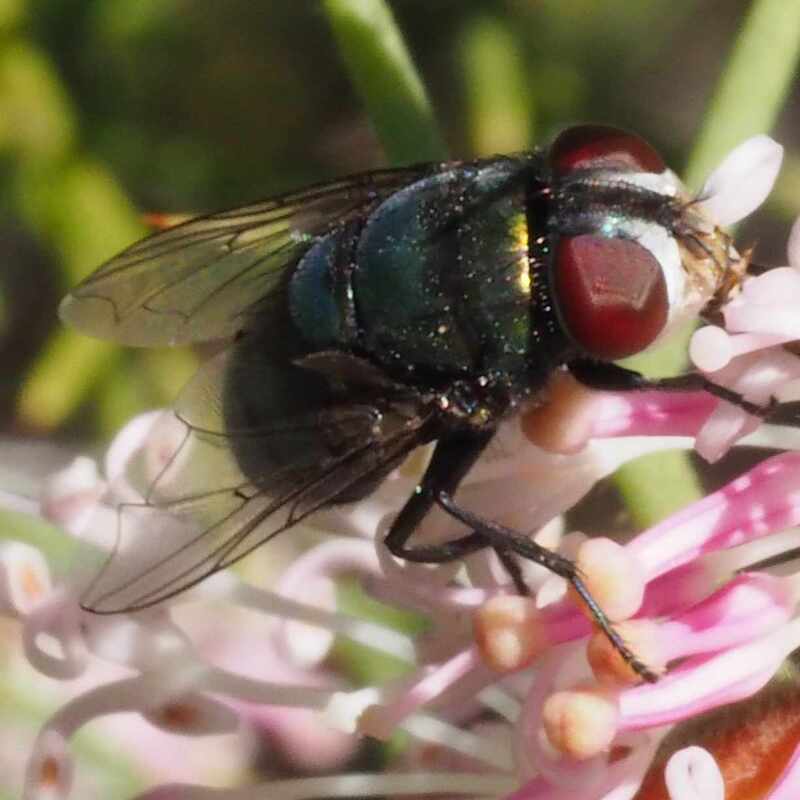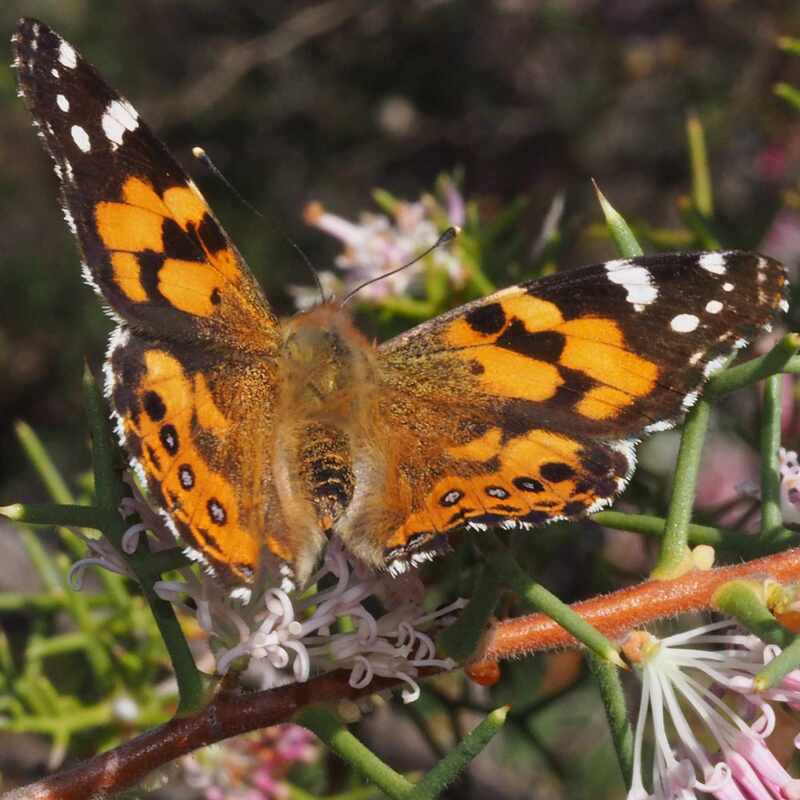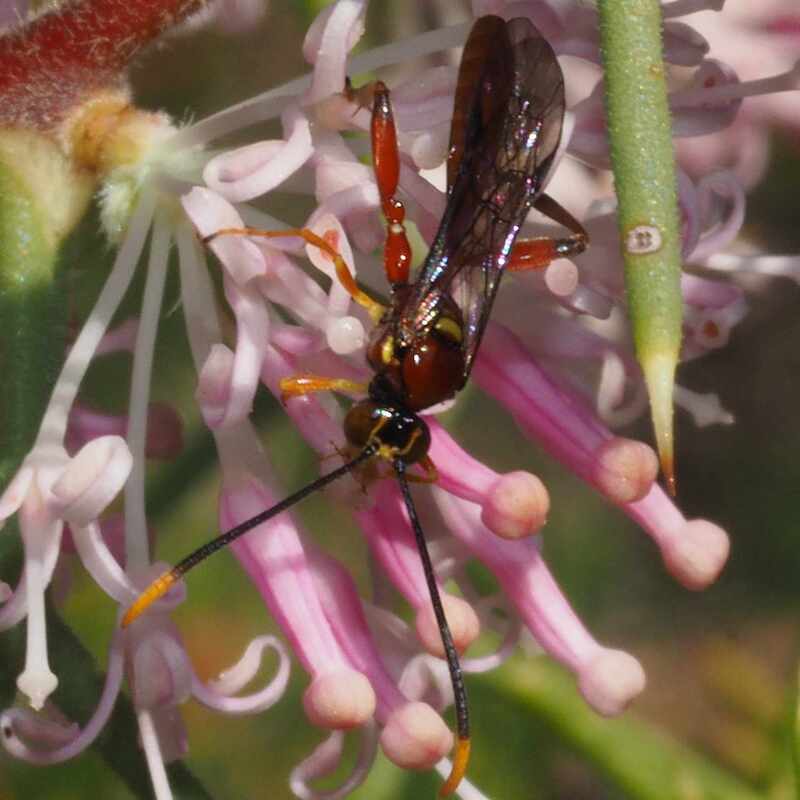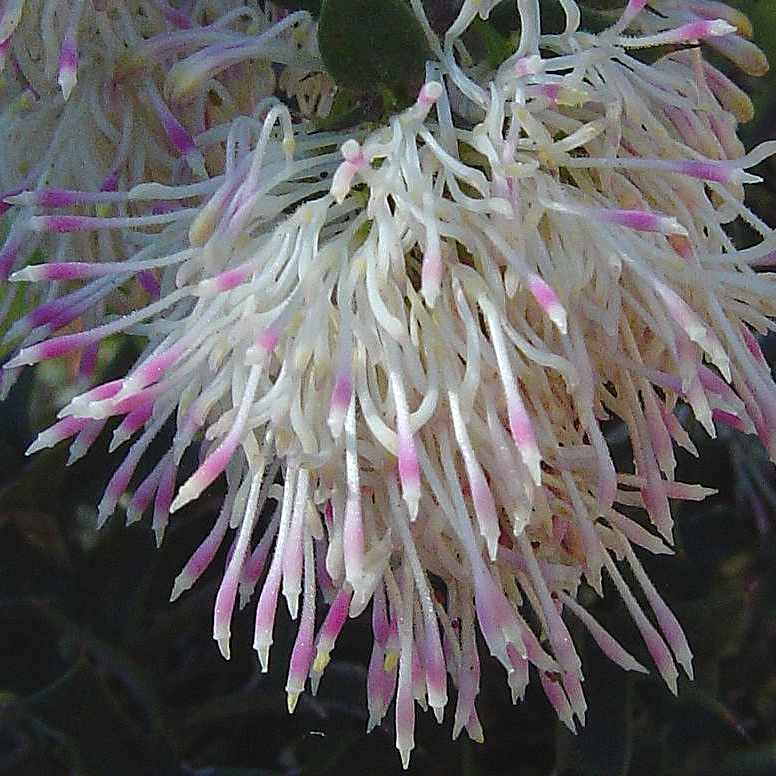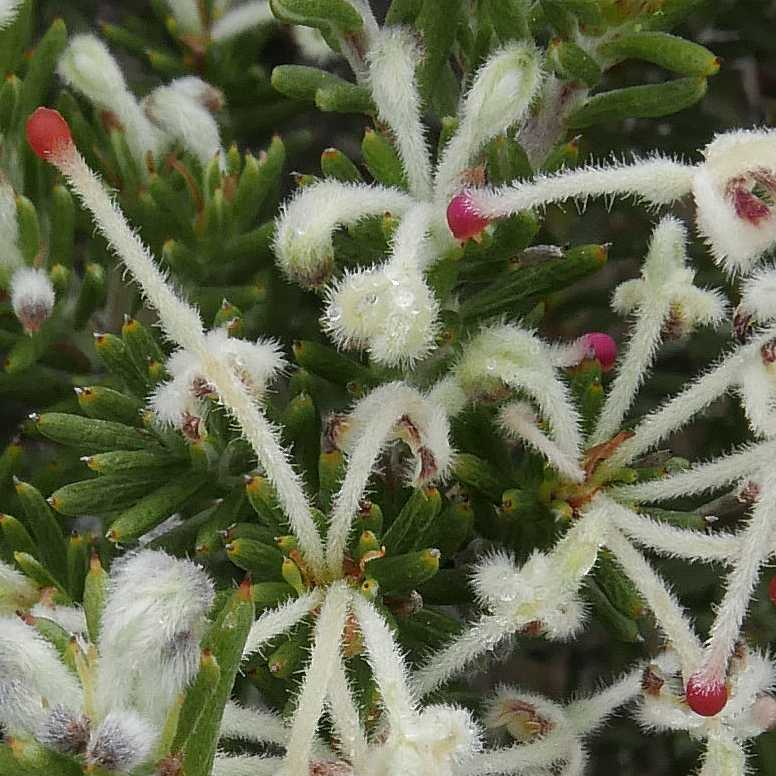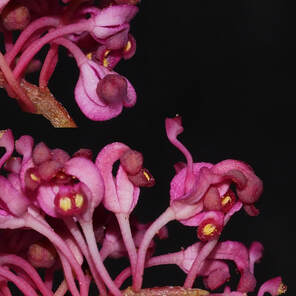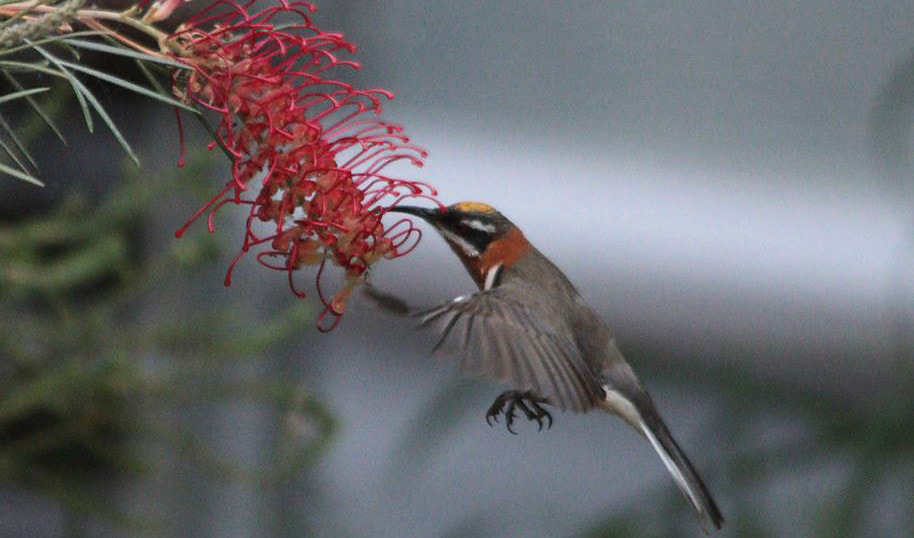| Greetings fellow foxies, have you ever wondered why grevilleas and hakeas have strange-shaped flowers, often with large curved styles, which stick out from the rest of the flower? If so, read on. Styles end with large terminal stigmas (female pollination part), which stick out from four curved tepals (combined petals / sepals) that have anthers at the end. How can insect or bird pollinators contact the widely separated anthers and stigma to fertilise the flowers? The answer is a sneaky trick called secondary pollen presentation. Pollen from the anthers is transferred to the stigma, which then functions as the pollen presenting organ for pollination. Images show flowers progressively opening. Here is a sequence
|
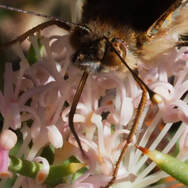 Butterfly drinking nectar
Butterfly drinking nectar
I spent an hour watching insects watching a flowering Hakea lissocarpha, which has profuse groups of flowers with short straight styles and a strong almost cloying aroma. The flowers were alive with insects, which barged their way through the flowers in search of nectar. I saw 2 butterfly, three fly, two wasp, and two bee species, and a honeyeater.
